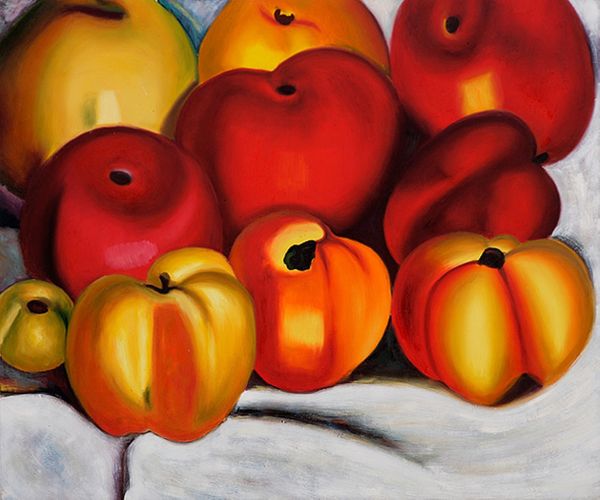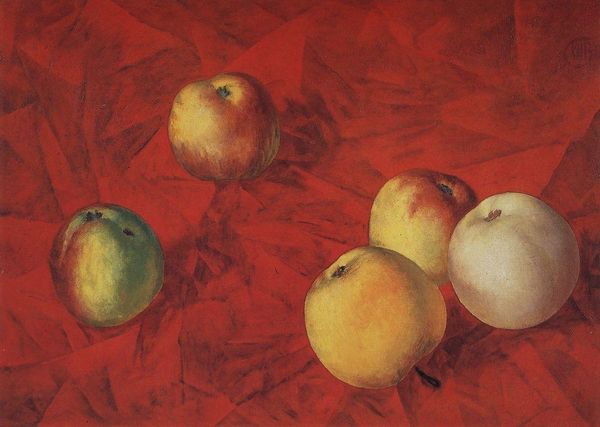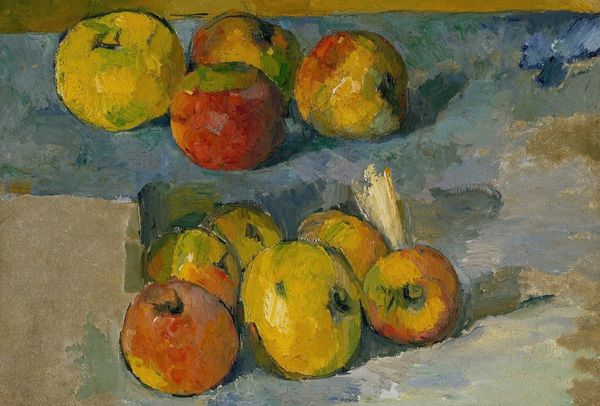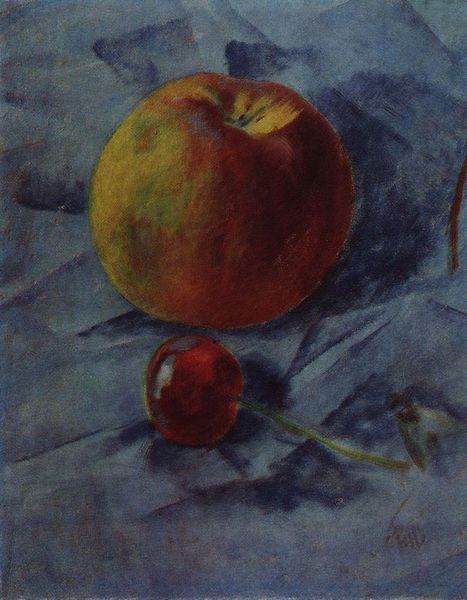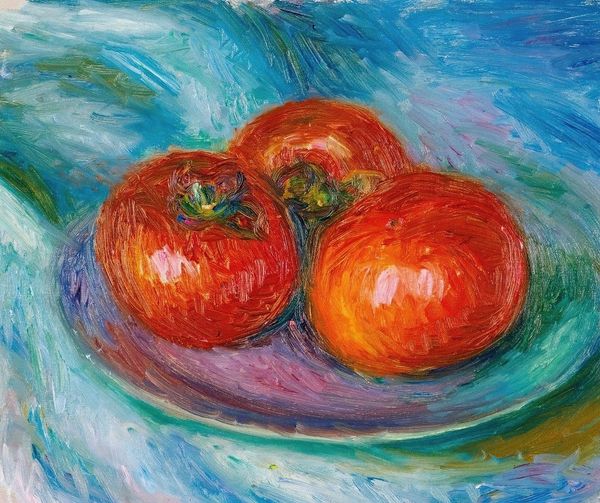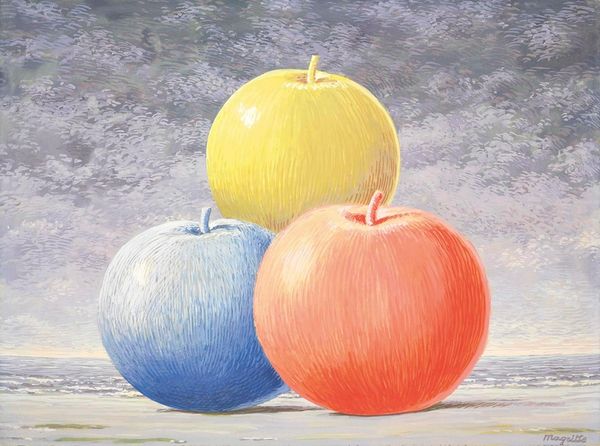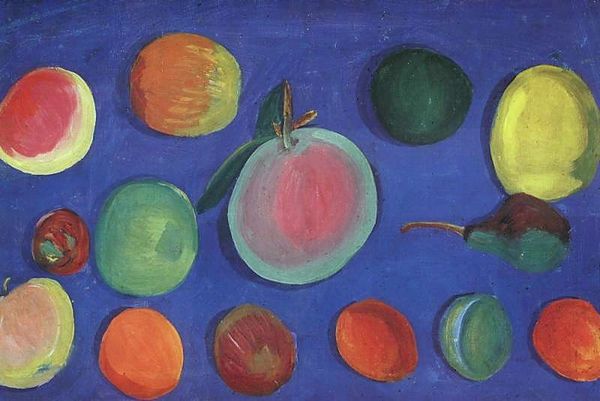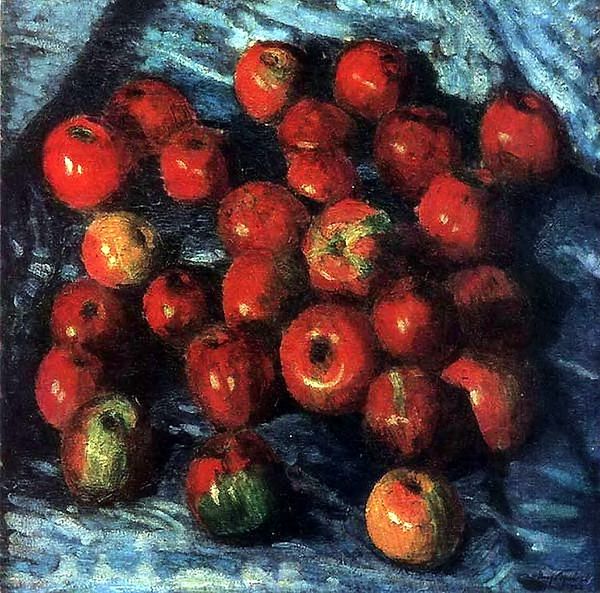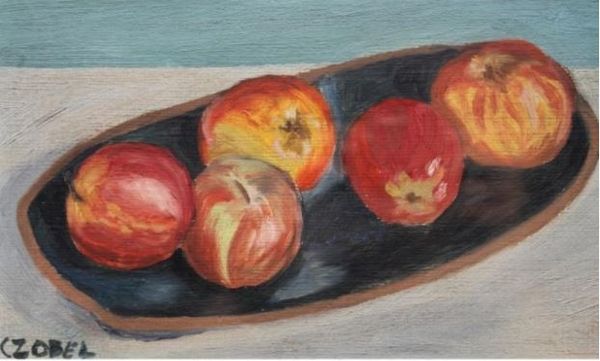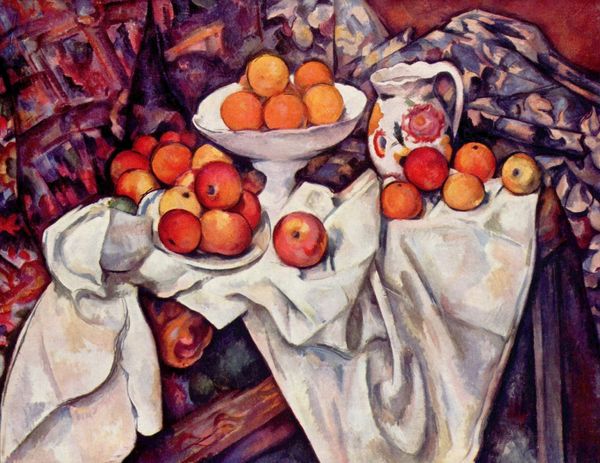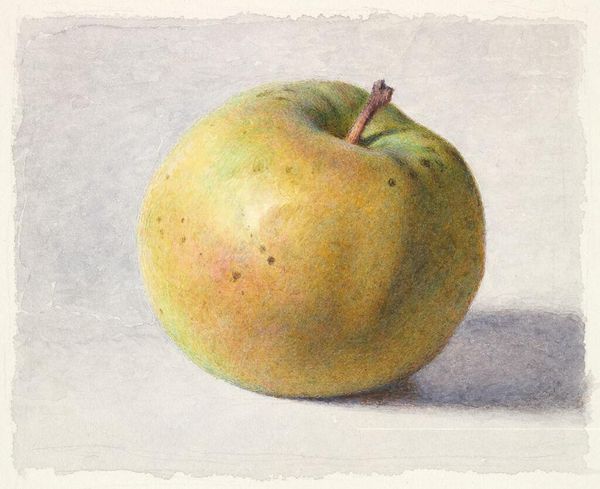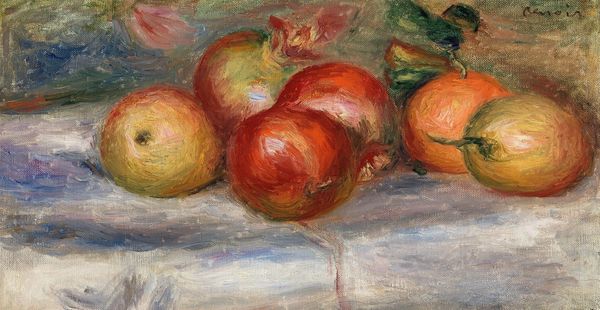
Copyright: Public domain US
Editor: We’re looking at Georgia O’Keeffe’s “Apple Family” from 1920, an oil painting that almost vibrates with colour. I find the composition really striking; it's so close-up, almost monumental. What elements jump out at you? Curator: Immediately, it is the orchestration of form and colour that commands attention. Notice the way O’Keeffe employs a limited palette, predominantly variations of red, yellow, and green. The apples themselves are simplified to their essential geometric forms. Do you observe how she manipulates light to create volume? Editor: Yes, the way light defines their shape, turning the fruit almost into abstract shapes, but I was curious, what else is so captivating about it? Curator: Consider the deliberate flattening of perspective. By minimizing depth and emphasizing surface, O’Keeffe directs our focus to the interplay of lines, curves, and the subtle gradations of tone. What might this flattening suggest about the artist's intent? Editor: Maybe to draw attention away from realism, focusing on the apple's pure form, rather than the story they might tell as a regular still life? Curator: Precisely! It is through such formal devices that the artist transcends mere representation. "Apple Family" presents itself not as a mere depiction, but as a study of colour, form, and the inherent beauty within the mundane. A conscious study of modernist formal considerations of form and colour, rejecting narrative for visuality. Editor: That's fascinating, the painting suddenly looks completely different to me. Thank you. Curator: And thank you, it is enriching to consider artwork from different vantage points.
Comments
No comments
Be the first to comment and join the conversation on the ultimate creative platform.
